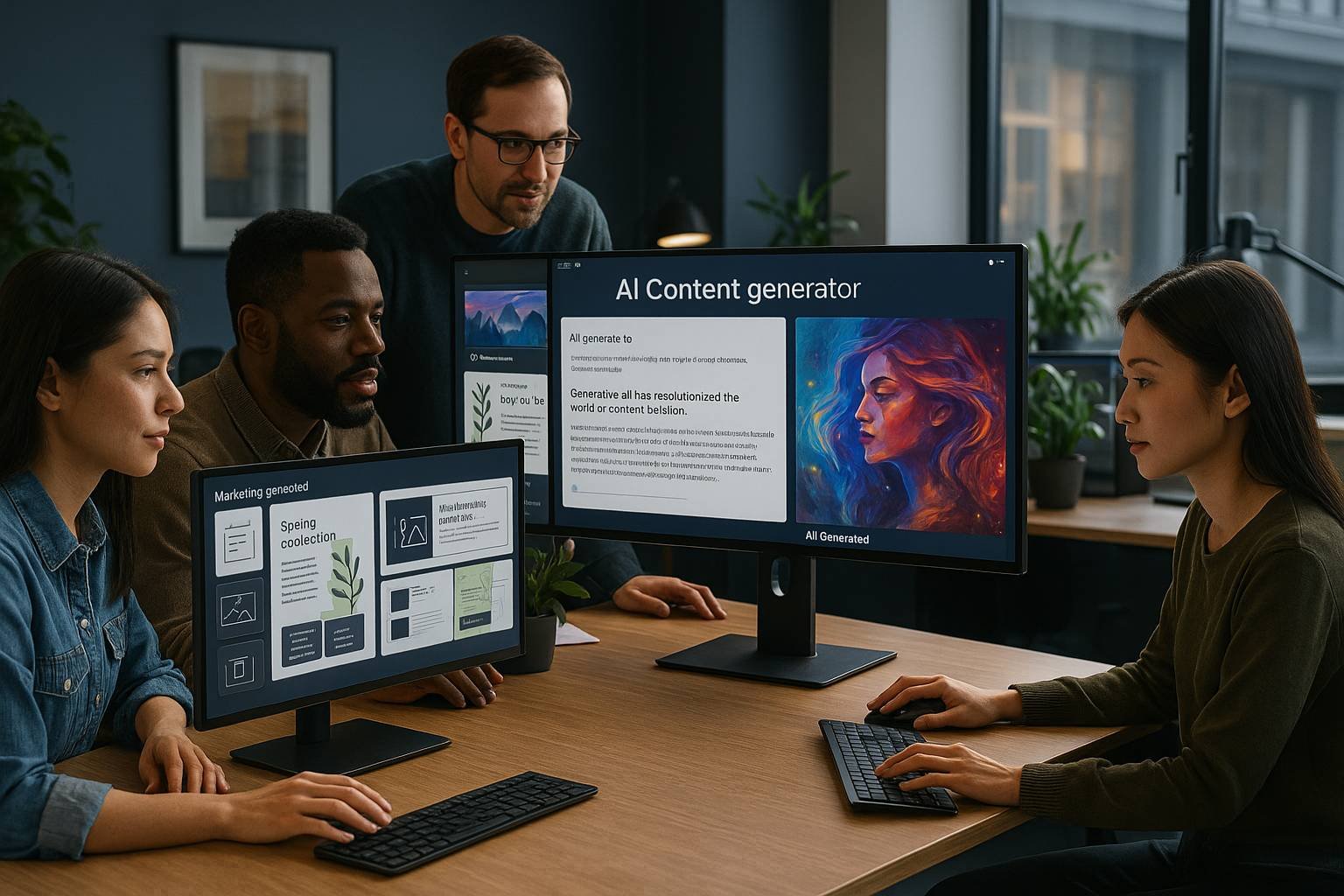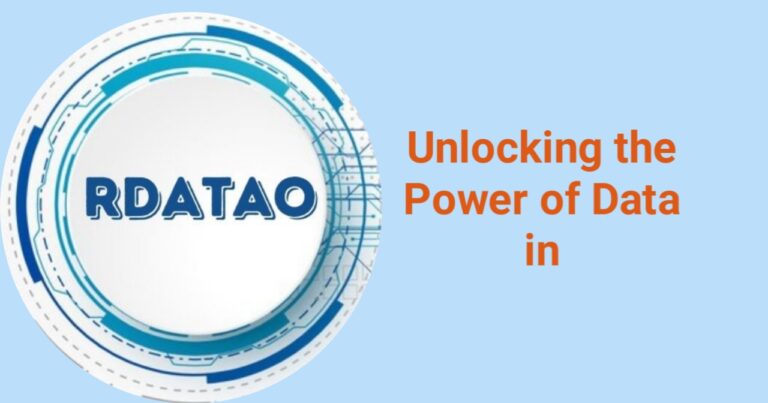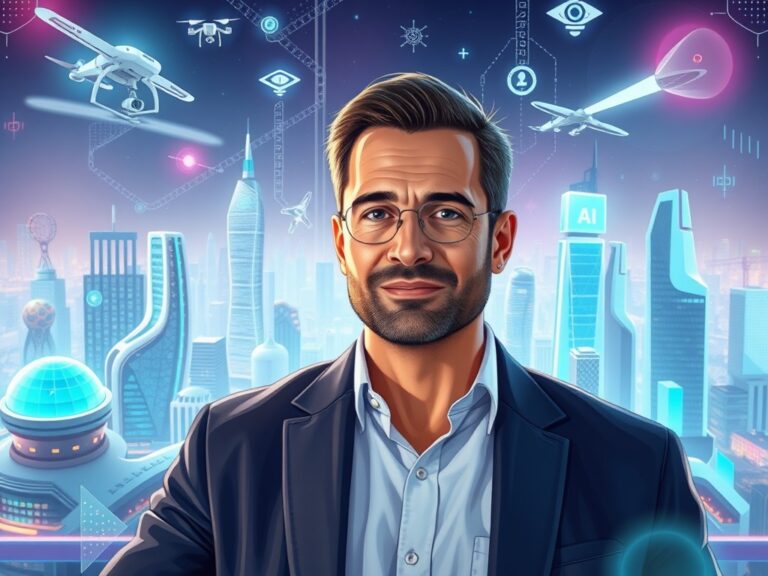Generative AI: Revolutionizing Content Creation in 2025
Introduction
Generative AI is transforming the way content is created across industries. From blog posts and digital ads to art and videos, the ability of machines to generate human-like content is changing workflows, accelerating production, and opening new creative possibilities. As this technology evolves, content creators, marketers, educators, and developers are embracing it not just for efficiency—but for innovation. This article explores how Generative AI is revolutionizing content creation and what it means for the future of creativity and communication.
What Is Generative AI?
Generative AI refers to artificial intelligence systems that generate text, images, audio, video, or other data based on prompts and learned patterns. Unlike traditional AI, which typically classifies data or predicts outcomes, generative AI creates new, original content that didn’t exist before.
These models, like OpenAI’s GPT and DALL·E, are trained on large datasets to learn grammar, structure, tone, and style, enabling them to produce coherent and contextually appropriate outputs. Whether it’s writing a blog, composing music, or generating realistic photos, generative AI is opening up new dimensions of content development.
Text Content Creation: Faster, Smarter, Scalable
One of the biggest revolutions driven by generative AI is in text generation. AI tools now assist with:
- Blog and article writing
- Email marketing drafts
- SEO-friendly product descriptions
- Creative writing support
- Scriptwriting for video content
By generating first drafts, summarizing research, or even rewriting old content, AI helps writers focus more on strategy, storytelling, and refinement rather than repetitive writing tasks.
Visual Content Generation: From Concept to Canvas
Visual creation has taken a major leap thanks to generative models. With just a description, artists and designers can create:
- Unique illustrations
- Concept art
- Product mockups
- Branding assets
Platforms like DALL·E, Midjourney, and Adobe Firefly allow users to generate detailed, professional-grade visuals in seconds—democratizing graphic design and making creativity more accessible.
Video and Audio Production
Generative AI is moving beyond static visuals into the realm of video and sound. AI tools are now capable of:
- Generating short video scenes from scripts
- Creating background music and sound effects
- Cloning voices for narration or localization
- Animating static characters
This allows for faster production cycles, especially for creators who lack access to traditional studio resources.
Content Personalization at Scale
One of the most powerful aspects of generative AI is its ability to tailor content to specific audiences. Businesses and marketers use AI to:
- Generate multiple ad versions for A/B testing
- Customize emails for different audience segments
- Adjust tone and style based on user preferences
This kind of hyper-personalization improves engagement and ROI while minimizing manual labor.
Industries Benefiting from Generative AI
Marketing and Advertising
Generative AI allows teams to rapidly produce content for campaigns, automate social media posts, and maintain consistent branding with minimal manual effort.
Education
Teachers use AI to create tailored lesson plans, quizzes, and even explanations based on individual student performance and learning styles.
E-Commerce
From product descriptions to customer interaction chat scripts, generative AI makes it easier to maintain high-quality, up-to-date content across product lines.
Media and Journalism
Newsrooms use AI to generate real-time reports, summaries, and multilingual articles, allowing journalists to focus on deeper, investigative storytelling.
Gaming & Entertainment
AI captioning is helping bridge language gaps in gaming—transforming cross-cultural player experiences.
Benefits of Generative AI in Content Creation
- Speed: Content that once took hours can now be created in minutes.
- Cost-Efficiency: Reduces the need for large creative teams.
- Creativity Boost: Helps overcome writer’s block and inspires new ideas.
- Scalability: Makes mass production of personalized content possible.
Ethical and Creative Concerns
With power comes responsibility. As generative AI becomes more prevalent, several issues have emerged:
- Misinformation and Deepfakes: The ease of generating fake news or manipulated media poses a societal risk.
- Originality and Copyright: Questions remain about who owns AI-generated content and whether it infringes on human work.
- Bias: AI models can inadvertently reproduce biased or harmful content based on the data they’re trained on.
It’s crucial that developers and users apply ethical frameworks, transparency, and human oversight in all AI content creation.
Future of Generative AI in Creativity
Generative AI is still evolving. The next decade will likely bring:
- Multimodal Models: Tools that combine text, video, image, and audio into one coherent output.
- Voice-Activated Creativity: Real-time content creation via voice commands.
- Adaptive Storytelling: Content that shifts tone and style automatically based on reader behavior or preferences.
- Embedded AI Assistants: Writing tools, design platforms, and video editors will come with native AI built-in, offering suggestions and automation on the fly.
To explore the latest breakthroughs in this space, check out OpenAI’s research page.
Best Practices When Using Generative AI
- Always Review Output: Never publish raw AI content without human editing.
- Avoid Over-Reliance: AI is a tool, not a replacement for your voice or vision.
- Keep Content Authentic: Align AI-generated material with your brand’s values and message.
- Use Ethical Prompts: Avoid creating content that misleads or causes harm.
FAQs
Q1: What is generative AI?
Generative AI is a form of artificial intelligence that creates new content—like text, images, or video—based on prompts and learned patterns.
Q2: How is generative AI used in content creation?
It’s used to draft blogs, create social media posts, design visuals, produce video and audio, and personalize content across platforms.
Q3: Can generative AI replace human content creators?
No. While it automates repetitive tasks, human creators are still essential for strategy, storytelling, ethics, and emotional resonance.
Q4: Is content made with generative AI original?
Yes, but it’s derived from training data. It’s important to fact-check and review for plagiarism or repetitive structures.
Q5: What are the ethical risks of generative AI?
Main concerns include misinformation, copyright issues, bias in training data, and the misuse of AI for deceptive content like deepfakes.

Kamran Khatri is a versatile writer and editor at ExpressZone.co.uk, bringing fresh perspectives and insightful commentary across a wide range of topics. With a passion for exploring diverse subjects—from technology, business, and finance to lifestyle, travel, and the arts—Kamran aims to inform, inspire, and engage readers through well-researched articles and thought-provoking content.
His work spans multiple categories including health, education, pets, entertainment, real estate, and sustainability, reflecting his commitment to delivering knowledge that connects with everyday life. Whether breaking down the latest trends, sharing practical tips, or highlighting cultural insights, Kamran’s writing combines clarity with creativity.
When he’s not crafting stories for ExpressZone.co.uk, Kamran enjoys keeping up with global developments, exploring innovative ideas, and connecting with readers who share his curiosity about the world.







